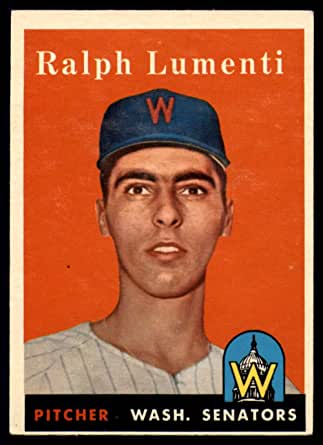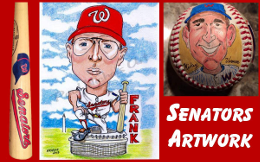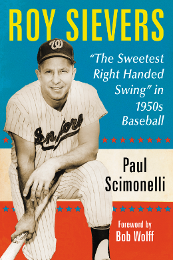By Jeff Stuart and Phil Hochberg
Every club has hopes on opening day of the baseball season. It is a similar kind of hope and sense of renewal that takes place when a highly regarded young prospect makes his major league debut. But you never know. The play’s the thing.
On April 28, 2011, Bryce Harper (5 year cost to Nats – estimated $9.9M) made his Major League debut at Dodger Stadium in Los Angeles. The No. 1 pick in the 2010 draft went 1-for-3 with a booming double, hit a tie-breaking sacrifice fly in the ninth, and made a bullet throw from left field that nearly cut down a runner at the plate. On May 4th he was hit by Cole Hamels of the Phillies in the first inning and later stole home. On May 14th, at 19 years and 211 days old, he hit his first Major League home run off Tim Stauffer of the Padres at Nats Park. He made his first curtain call. And yes, there were the 5 strikeouts against the Andy Pettitte and the Yankees. But as Manager Davey Johnson said, “He’s not going back,”
On June 23, 1954, Harmon Killebrew, 6 days short of his 18th birthday, made his Nats debut as a pinch runner at Comiskey Park in Chicago. Harmon was a bonus baby (Cost to the Nats – $50,000). The contract was large enough that he had to remain with on the major league roster for two full seasons. The bonus rule, in effect from 1947 through 1965, was designed to keep down the money paid to the free agents, and limit the dominance of teams with deep farm systems and lots of money.
“The kid’s worth it,” said scout and former Nats great Ossie Bluege, who had gone to see Harmon play for the semi-pro Payette Packers at the Payette High School Stadium. He watched Harmon hit a long home run over the left field fence 400 feet away. Bluege measured the blast at 435 feet the next morning. “He has Mantle’s kind of power. Big leaguers have been barnstorming through that part of Idaho for years, and none of the natives ever saw any of them clear that fence. He doesn’t swing that bat like a high school boy. He cuts with it like he’s the boss up there at the plate. He has the best wrist action I have ever seen. And he seems to have no weak spots. He hits fast balls, curve balls and all kinds of pitches with apparently equal skill.”
“If he is half the ball player the last man Washington got out of Idaho proved to be…” said Senators owner Clark Griffith. “Naturally, you wouldn’t remember. We got him in 1907. His name was Walter Johnson.”
Griffith, who had originally told the press that Killebrew would start a Sunday game in July of 1954, backed off. “Manager Bucky Harris and Harris alone will be the judge of when Killebrew is ready to play,” he said. “We are not attempting to rush the boy and we have no intention of ruining him by subjecting him to undue pressure.”
On June 24, 1955–one day shy of a year from breaking in and five days short of his 19th birthday– Killebrew hit his first Major League home run, off Billy Hoeft of the Tigers at Griffith Stadium. Sitting on the bench and seeing spot action did not suit Harmon who was relieved when he was sent to the minors during spring training in 1956. “It’s no fun sitting on the bench and I think if I had to keep doing it, my big league career would be over before it started.” In 1955, Killebrew showed a great deal of progress under the patient tutelage of Coach Cookie Lavagetto. He hit 4 homers. But he had only a .200 average. He needed to hone his skills. “I don’t mind being sent down so that I can get some good experience,”Killebrew said.” “Cookie tells me that’s what I need. He thinks I could make the big leagues and I respect his judgment. I’m a married man now so I’ve got to make good. I’m a little mixed up about my future right now.”
He needn’t have worried. The Hall of Fame awaited his arrival.
In the outfield the same day Killebrew hit his first home run was another bonus baby, Jerry Schoonmaker (Cost to the Nats – $30,000). He had 2 hits. The 21 year-old Schoonmaker had been the National Collegiate home run champion in 1954, hitting 10 for the University of Missouri where he was also captain of the football team and lettered in basketball. He still holds the Mizzou record for home runs in a game (3) and is 4th all time for the Tigers in slugging percentage (.813). He was the top home run hitter at the 1955 Pan Am Games in Mexico, hitting three and batting .380. Signed by assistant farm director Sherry Robertson, Schoonmaker made his debut on June 11, 1955, going 0-1 as a pinch hitter.
“I don’t intend to keep him warming the bench,” said then-Manager Chuck Dressen. “This kid has real good action. Give me a kid who can run and throw and I’ll take a chance on him. I like him.” Schoonmaker, an artillery lieutenant in the Army Reserves, received orders to report to Ft. Sill, Oklahoma, where he spent all of the 1956 season. He was back with Washington for the 1957 season, but hit just .087, with 2 hits in 23 at bats. Washington, now out from under the two year bonus rule, could send him to the minors for seasoning, which they did. In 1958 Schoonmaker played 124 games with the Charlotte Hornets of the South Atlantic League and 15 outings with the Chattanooga Lookouts of the Southern Association, hitting a combined .222 in what would be his only minor league season.
In December of 1958, Schoonmaker injured his eye while using a jackhammer at a housing construction job at Fort Leonard Wood, Mo. A metal fragment pierced his eyeball. He took leave of the game at age 25. When asked if the loss of vision in an eye from an industrial accident while working in an off-season job ended his playing days, Jerry responded, “I couldn’t hit the curve ball with two eyes, let alone with only one.” After baseball, Jerry resided in Munster, IN, and was employed by the Ford Motor Company. He is 78.
And then there were the Pitching Phenoms.
On June 8, 2010, Stephen Strasburg, age 22, made his major league debut against the Pittsburgh Pirates in front of an incredibly enthusiastic sellout crowd of 40,315 at Nationals Park. He struck out 14 and walked none in seven innings. Ryan Zimmerman homered in the first, But the Pirates’ Delwyn Young hit a two-run homer off Strasburg with two out in the fourth, giving the Pirates a 2-1 lead. Homers by Adam Dunn and Josh Willingham in the sixth gave Strasburg the lead and the win, 5-2.
Fifty-three years before Strasburg, Raphael Anthony Lumenti, a left handed pitcher from the University of Massachusetts, signed as the Nats’ first bonus baby pitcher (Cost to the Nats – $35,000). Making his major league debut on September 7, 1957, he pitched a scoreless inning of relief against the Yankees at Griffith Stadium. At 20 years old, he was the youngest player on the 1957 Nats, younger even than Killebrew.
Before his first major league start, Manager Cookie Lavagetto said, “He’s as fast as anybody we already have on the staff.” That first start came against Kansas City in Washington on September 14, 1957. He pitched seven innings, giving up three hits before a small – but typical Washington – crowd of 302. Only Gus Zernial’s 22nd home run did any real damage. The Nats won, 3-2, with Lumenti striking out five and walking three. Lavagetto was lavish in his praise. “He was wonderful,” he said. “You would have thought he had been pitching 20 years. This boy is real find.”
Prior to the 1958 season, the left hander rated a mention in the Sports Illustrated analysis of the Nats. “Ralph Lumenti, pitched his way into the starting rotation this spring and could give a lift to the staff,” said the article. “The pitching staff could certainly benefit if Ralph proves he was worth his bonus.” In March of that year, Lavagetto named Lumenti as one of his starters. “I think Ralph will continue to improve trough the remaining exhibition games and I’d say he’ll be even better when the season opens.”
At 21 years of age, Lumenti (6′ 3″, 185 lbs) won his first and only Major League game on May 8, 1958, defeating the Tigers in Washington, 4-1. He pitched 5.1 innings and struck out three. He allowed only four hits but walked six. In his bonus period stint with Washington he appeared in eight games,made four starts, and had a 1-2 record. In 21 innings he struck out 20. But he walked 36 and gave up 21 hits and had an ERA of 8.57. His inability to get the ball over the plate doomed his career.
The club optioned him to the Chattanooga Lookouts of the Double-A Southern Association on June 16, 1958. A year later he threw a no hit, no run game against Savannah for Class A Charlotte of the South Atlantic League, walking only two. That earned him a September call up in 1959–making two appearances in relief.
With a shoulder injury bothering staff ace Camilo Pascual for much of 1960, Nats owner Calvin Griffith – who had moved the team to Minnesota at season’s end, said the staff ” needs four or five new faces.” The hard throwing Lumenti was still an intriguing prospect. Pitching for Charleston against Louisville in the American Association, he threw another no hitter on May 25, 1960. He fanned eight and walked only one. Just three balls were hit to the outfield. On May 11 he had set a club record by striking out 15 batters. But his signature wildness cost him that game. “He needs to convince himself he’s a major leaguer,” said Griffith. He never could. Lumenti, 75, lives in North Grafton, MA.
Thirty-nine years earlier than Strasburg, another young prospect took the mound at RFK Stadium, Peter Broberg (Cost to the Nats – $150,000 – largest bonus in club history at the time). Owner Bob Short used half of the money he received in the trade for Mike Epstein and Darold Knowles to Oakland in May to sign Broberg, the club’s number one draft pick. The contract called for the junior from Dartmouth College to go straight to the Major Leagues. “You have to be impressed with an arm like that. He’s going to scare some hitters in this league,” said Manager Ted Williams, after watching a work out.
Broberg made his major league debut against Boston before nearly 20,000 on Sunday, June 20th, 1971. The hard throwing right hander struck out seven, holding the Red Sox to two hits through the top of the sixth inning. Howard hit a three-run homer in the bottom of the inning, giving him a 3-0 lead. But Boston rallied to win, 4-3, after Broberg had left the game.
On Sunday, the 4th of July, Broberg posted his first major league victory, defeating the Indians, 9-4. He pitched a complete game, allowing six hits. Cleveland ace “Sudden Sam” McDowell, the American League leader in strikeouts, commented, “He throws as hard as I do. He hides the ball well. All of a sudden, it’s on you.”
On September 4th, Broberg lost a shutout bid in the eighth as the Orioles rallied from a 2-0 deficit to win, 4-2. Baltimore manager Earl Weaver was impressed. “With a curve ball over the plate, he’s Vida Blue,” he said.
But in July of 1973 the franchise, now in Texas, optioned Pete, to Spokane of the Pacific Coast League. General Manager Joe Burke said that former Manager Williams’ suggestion that Broberg develop a slider might have hurt his fast ball and curve. But most of all, he felt it hurt his control. He was 15-34 with the Nats/Rangers. He was traded to Milwaukee in 1974 and went 14-18 with the Brewers in 1974. His final season was 1978 with the Oakland Athletics. He won 41 major league games while losing 71, posting an ERA of 4.56.
His lack of success pitching didn’t hamper his “professional” career, however. Broberg has been a successful attorney in Palm Beach, FL (Coe, Broberg & Austin) for more than two-and-a-half decades, following in the footsteps of his father, a one-time Palm Beach municipal court judge and lawyer who died in 2001. “I didn’t fall very far from the nest,” Broberg says.
Harper has gone to the Phillies. So now we have Strasburg, and Juan Soto. We will watch and enjoy … and hope. Play on.
Phil Hochberg is a Washington attorney who was the Stadium Announcer for the Senators from 1962-68. Jeff Stuart is long time Nats fan and author of TWILIGHT TEAMS.









